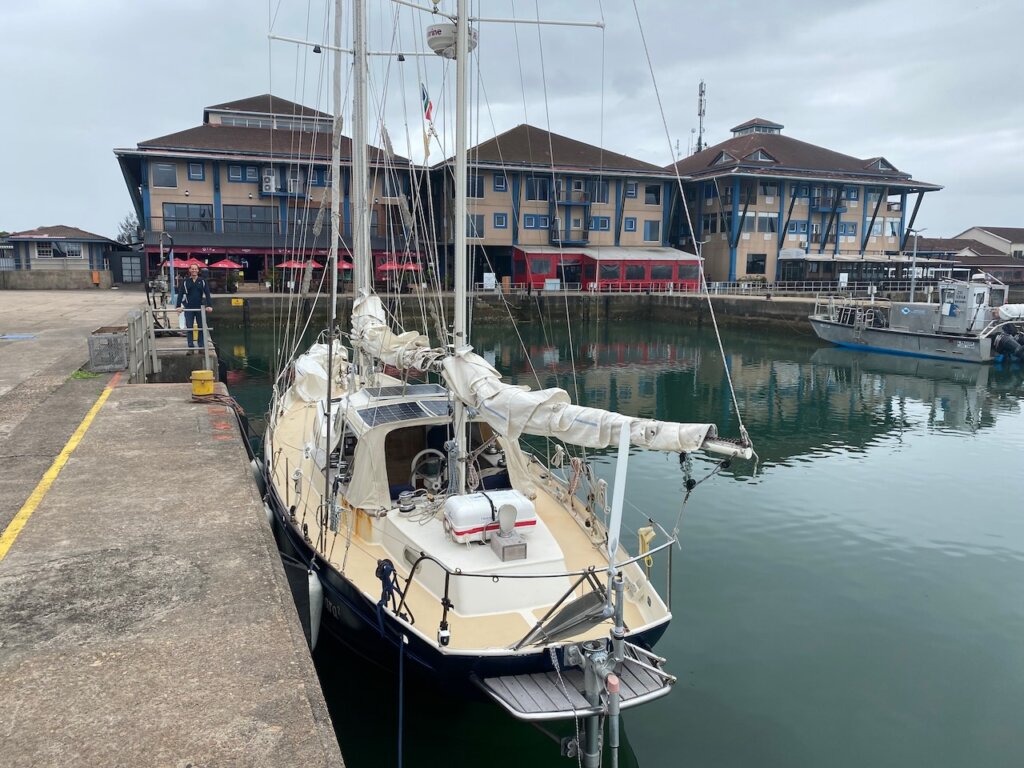“So far, so good“Ivar judges when he receives the new weather report. The southeasterly trade wind is still pushing us gently forward at around 25 knots diagonally from behind. This powerful and constant wind seems to last for a while and that is why we are making good progress. We left Reunion three days ago and it’s already more than 400 miles behind us. According to the latest weather forecast, we can be with us in a few days waypoint south of Madagascar. But then? What awaits us in the dreaded maritime zone between Madagascar and South Africa?
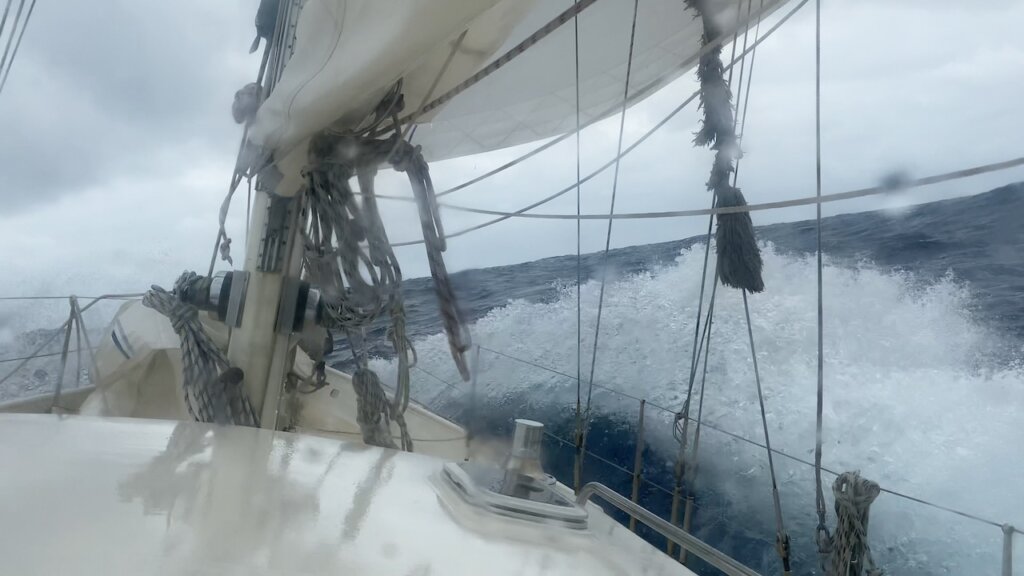
We are heading to South Africa
Notorious, more notorious, more notorious
We have already had difficult sailing conditions, remembers Floris. Like in Patagonia, where we sailed along the Argentinian coast to Staten Island with strong winds. Or when crossing from French Polynesia to New Zealand, when a violent storm caught up with us. But the journey of more than 1,200 miles that we are making today – from Réunion to South Africa – is of a completely different order. The devil is in the tail of this stage, because of the infamous Agulhas stream. This current pushes massive amounts of warm water south from the Indian Ocean, sometimes varying in location and strength. Near the South African coast, it can go up to eight knots. In addition, depressions tighten regularly around the Cape of Good Hope, which then tilts in our direction. Result: violent winds and big waves which, against the current of the Agulhas, stiffen and break. Such monstrous waves can reach a height of more than ten meters and are life-threatening. Many large ships have been swallowed up by the ocean in this kind of weather over the centuries. The sea area we are heading towards is therefore notoriously square.
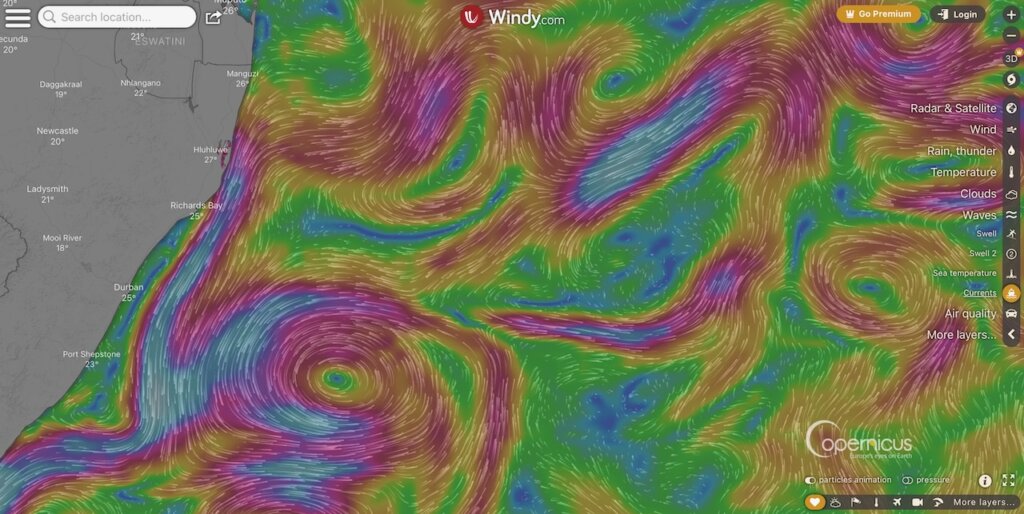
The current of the Agulhas is also expected in Windy
Weather Guru Des
The experiences of other sailors do not really reassure us either. We have read and heard that no one has reached the South African coast without at least a front or a depression. Fortunately, we are not alone, as retired world navigator Des Cason helps us interpret weather information and determine our tactics. From South Africa, he accompanies countless sailboats on their crossing of the difficult Indian Ocean. All for free, from the goodness of his heart. We send him our position, course and speed every morning. A few hours later, he sends us the weather forecast by e-mail and advises us on the best route to follow. Very useful, as we have a very slow satellite connection on board, while it monitors a larger area from the shore and has more sources of information.
Due to the high mountains of Madagascar, the wind picks up and Des writes that we should sail even further around the South Cape of Madagascar. “The wind in the acceleration zone should exceed 40 knots.” That seems a little too good to us, even though we have a tailwind. “We then go deeper into the sea area where depressions occur regularly,” says Ivar. But Des has a tactic for that too: “If a depression comes in, you can turn north into the Strait of Mozambique. The fronts lose their strength there. I can then pinpoint exactly where the Agulhas current is so you can go around it – as long as the weather conditions are too dangerous. This reassures us. We follow his advice and change course further south.
Mozambique Street
As a safety measure, we are reducing our sails a bit and we certainly don’t regret it. On a double-reefed mainsail only, we’re going like firefighters, with more than 30 knots of wind astern. “And this when we are now about 150 miles south of Madagascar. I’m glad we listened to Des,” Ivar concludes. After crossing Madagascar, the Strait of Mozambique opens up before us. We sail west, while a calm north wind gives way to a calm south wind. Twice a day we nervously check the weather, but to our great relief the depressions do not appear. Des also sees no obstacles to head straight for Richards Bay. We deliberately choose this northernmost South African port, as the current of the Agulhas strengthens further south. Additionally, the local yacht club is known to be safe and friendly.
Disrupted weather conditions
Des notes that there has been depression-free weather in this cruising area for almost two months now – quite exceptional for the time of year. We had also noticed in the Indian Ocean that the weather was behaving differently than usual: not the usual trade winds, but a low pressure area. It turned into a tropical depression and we barely managed to avoid it. Around the same time, Pakistan was experiencing catastrophic flooding. “Weather conditions in several regions are therefore significantly disrupted – this is only one of the many manifestations of climate change”, analyzes Ivar. “Well, I’m very happy anyway that we escaped the depression dance in this infamous sea area!” Floris laughs.
Humpback whale and sparkling wine
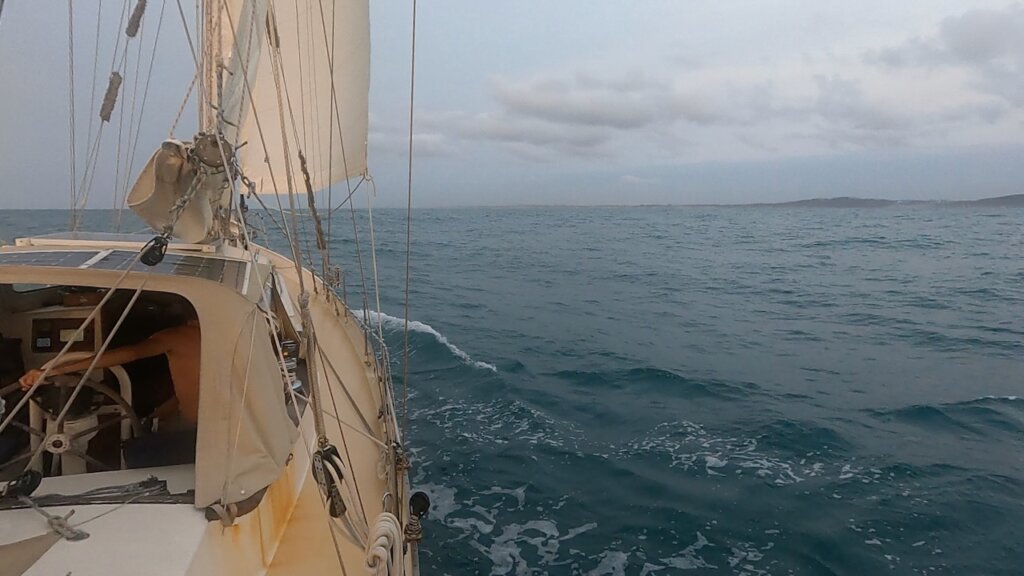
The coast of South Africa in sight!
Slowly we sail towards the coast. The last part we have to keep to the north to compensate for the strong southerly current of two knots. When we sight Richards Bay, a humpback whale suddenly appears on the surface right next to the boat. He huffs, as if welcoming us to South Africa.
Richards Bay is an important industrial port for the export of coal and ore, so the waterway is deep and well marked. THE portcontrol gently grants us permission to enter. On the way to the customs dock, we pass an empty basin. There used to be a marina here, but a few years ago it was destroyed. As we moor, Natasha comes to greet us – much to our surprise and delight. Completely voluntary, this smooth South African helps foreign sailors to clear customs with the authorities. We can even ride with her through customs. Then she also takes us to a mall for fresh produce and a SIM card. What a performance!
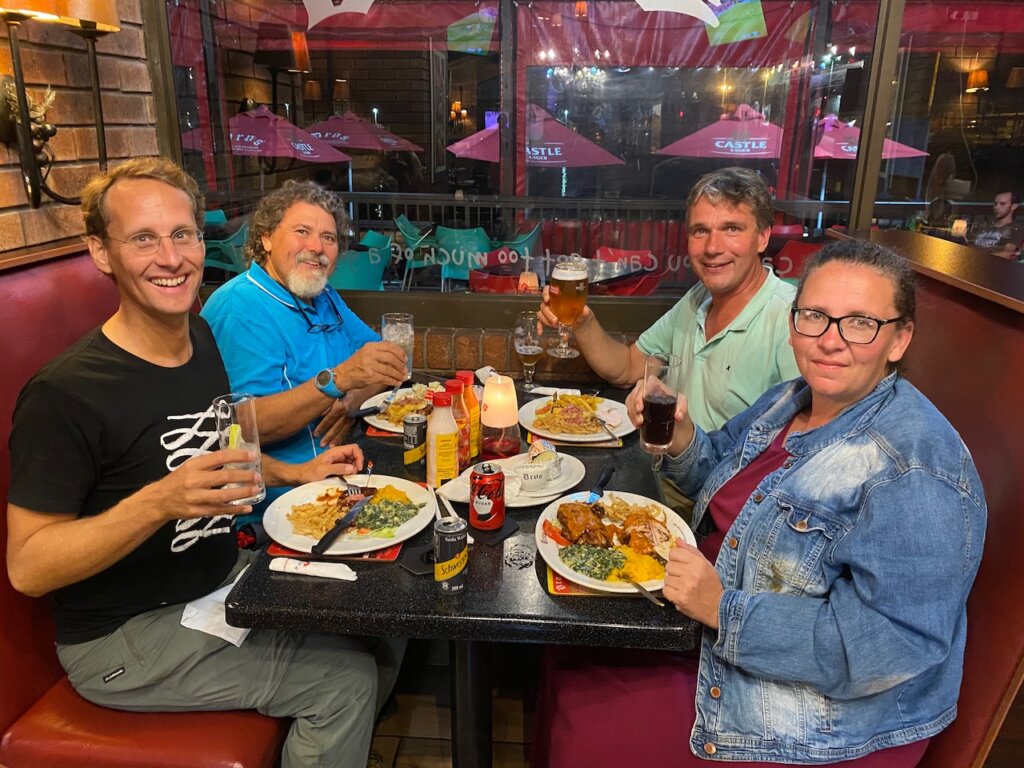
A warm welcome from Natasja and fellow sailor Guy
She introduces us to the only remaining marina, the Zululand Yacht Club. There is a good place there. Later in the week, a reception is organized and the president of the yacht club welcomes all the international sailors. He even hands us a bottle of sparkling wine – we’ve never experienced this before! While the braai – the South African barbecue – spreads delicious scents, we toast with local and international sailors. The evening becomes more and more cozy and we feel euphoric. We left New Zealand only five months ago. Our goal: to cover more than 10,000 miles in one season, and cross the Indian Ocean to South Africa before the hurricane season. We made it – and now such a warm welcome. We can’t believe our luck!
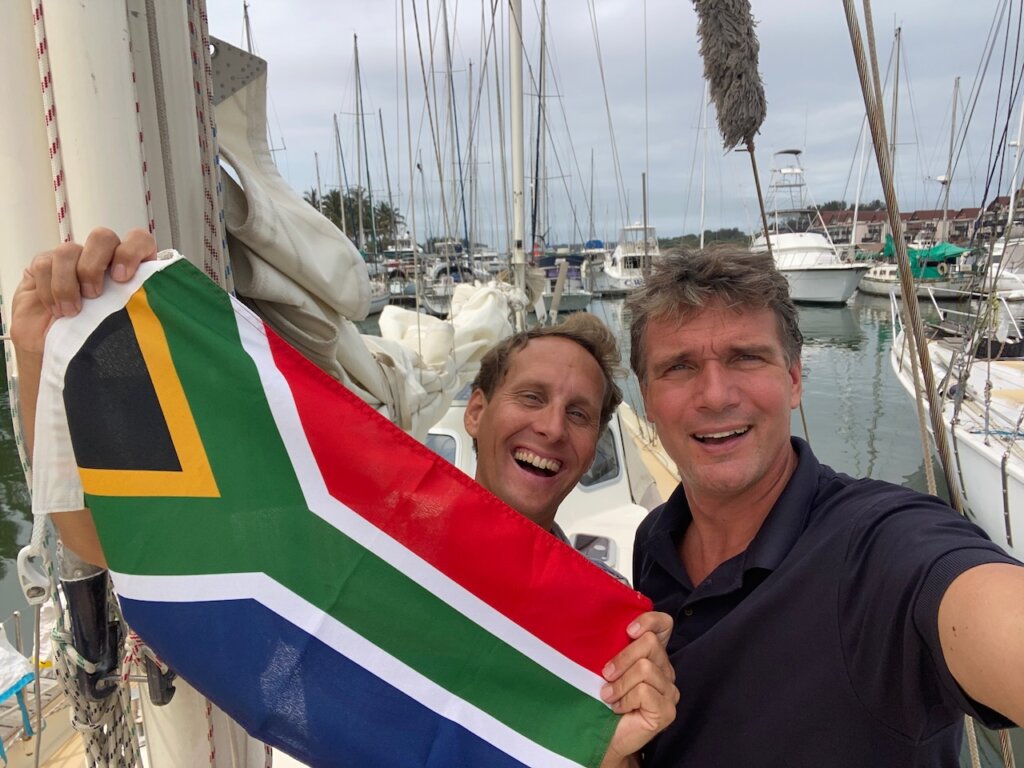
We are in South Africa!!!
More information? Look here for sustainable solutions and the nautical adventures of Sailors for Sustainability.
More leaving stories? Read all about Column Anna, Black Moon and watch Yndeleau’s vlog.
Tags: Weblog Sailors for sustainability Last modification: April 26, 2023
“Devoted bacon guru. Award-winning explorer. Internet junkie. Web lover.”
 DodoFinance Breaking News Made For You!
DodoFinance Breaking News Made For You!
